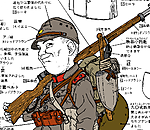1⁄35Sokol
35
Comments
Sokol
The idea was just so clear it didn’t take me much time to come up with decent plans. The same evening those were drawn. They showed the upper structure of a boat, and some groundcover just like if the boat had been stranded and broke underwater in some marshes.But then I didn’t know at first where to set up the action or which boat to use. For the last two years I have shown my work on the internet and I have been asking many questions, received many answers, many of which pointed to links that allowed me to build a comfortable stash of reference material concerning early Russian 20th century naval equipment. It was here that I set up to find the right boat.
The main issue I had to take care of was the funnel. It shouldn’t be as big as to dwarf the figure standing near it. This alone limited my choices to some kind of torpedo boat as destroyers’ funnels were certainly too big. Then I remember last year meeting a Finnish modeller who was immersed in his country’s naval history. He sent me some pictures of his work – but also a great picture he shared with me showing the close up of the gun cradle of a torpedo boat in the Sokol class. Now searching a bit deeper, I managed to find some books about Sokols which were a help when it came to plans but which only showed some general view of the boat. Those certainly would be enough to create a 1/700 model but not quite detailed enough for bigger scales. Nonetheless, I set up for a Sokol thanks to that great single close up picture I was given.
Furthermore, some profiles in the book as well as a picture I was sent showed a particular ship of the class which was painted green which could prove useful as I never showed any enthusiasm towards the predominantly grey color of 20th century ships.
So what were Sokols? In a lot of Eastern European languages it means “falcon”. The real Sokol was built in England for the tsar by Yarrow, and was later copied more or less brilliantly by Russian arsenals. A good dozen (?) were built, a few sank during the Russo-Japanese war; some others were used as minesweepers during World War One – the Finns managed to pick up a few for their own navy when they gained their independence in 1920, and the rest was finally scrapped during the 1920’s.
This is one of those, dragged from the sea coast to a marsh and left to rust. It could almost be an accurate scene.
The challenge
I just can’t start a new diorama if there is no real challenge. But this proved not really hard to find.You know what’s pretty hard to model when you want to scratchbuild those kind of early 20th century warships? The main guns as well as the secondary rear one stand on some large metal surfaces pierced with hundreds of holes.
I remembered gloomily of the pictures my Finnish friend sent me of his own handsome 1/48 Sokol model and had a look at his pierced gun cradle only to realize he did all the holes by himself using a drill.
I don’t have the patience to work like this so I had to think of an easier way to guarantee an even holing scheme.
Then I wanted to create a marsh and got to remember a childhood memory I am very fond of. Some flooded old Gaul quarry near my hometown where we used to bathe. The water was so pure we could have taken a look at the fish way below our feet.
So I decided the water would be see through and yet, when we would have a look at the diorama from its side, the water would be of a nice blue/green shade just like it would be in a normal bit of still water.
Last but not least I wanted to work on a light source. I worked the idea that a diorama should show the direction of the light. I planned for those warm colours you get at sunset. Here the light would come almost horizontally and bathe most of vertical surfaces. I was aware right from the start that the diorama would work best if viewed from one specific angle, but yet the point would be that different colours schemes would be available if the viewer chooses to have a look from unexpected angles.
Comments
Hi Claude -well this expo was at half an hour *walking* from my home so..
I arrived at the opening at 9am on saturday, left 10 mn later and took the dio back 10 mn before the closing on Sunday so you see, I am not very good at public relations
It was a fig show called Lugdunum, and no i didn't win anything -not that it was important indeed
plenty of pics of the show
thanks for asking anyway
here
FEB 29, 2008 - 02:44 AM
Simply superb, and forget taking your work to model shows, JBA, you need a studio of your own!
Peter F
MAR 26, 2008 - 08:06 PM
Thanks Peter, but honestly i 've always been knowing my own diorama promised land was certainly not paved with gold medals from shows
But i would still go for the friends. maybe see you at Telford in one year or 10!
MAR 28, 2008 - 12:54 AM
Jean-Bernard,
Your work as always is just spectacular. I hope to someday do a diorama so fully realized. I do follow my interests now and let them inspire me. I am growing very tired of the same old types of subjects. I am starting a figure company with my best friend and our subject matter is inspired by history, but civilian history rather then military history. Every one who has seen our first three figures has really liked them. I only hope that our figures add to the hobby the way your work does.
Best
Jeff
APR 17, 2008 - 03:24 PM
I just saw this, and JBA, my friend, all I can say is, you are a genius. While most dioramists try to faithfully replicate reality, you go much further, and try to replicate a moment of your self. Fantastic work.
APR 18, 2008 - 08:03 AM
So well, I just caught your comments while in a cybercafe in the "worse" kind of French wild west i could be stucked in and you can imagine those really cheers me up
Jeff I can only pray for your new company to be successful! And thanks David as always (very long time, very no see!!) may your inspiration still be there wherever in the world you are right now
bye for now my friends
JB
APR 22, 2008 - 01:53 AM
JBA I really admire your creative skills,such as using cigarette paper for clothes and such. Taking the time to explain your techniques and the reasons behind them is truly a learning experience for me. It would be a joy to see your projects in person. Keep it up! rR
APR 22, 2008 - 02:56 AM
HI JBA
For some reason I never replied/posted first time around ... so I´ll do so this time. Have always loved your models, and its always great to see them brought back again. Even the still water looks great!!
MAR 07, 2010 - 02:39 AM
Thanks Michael for unearthing such an old thing, it still looks okay after 3 years..
Than you Franck, the "reverse water" method is completely crazy to be honest and I wouldn't do this again. but i still like the way i treated the green colours.
Someday i might change the guy which is the weak point of the scene
MAR 07, 2010 - 11:30 PM
Copyright ©2021 by Jean-Bernard André. Images and/or videos also by copyright holder unless otherwise noted. The views and opinions expressed herein are solely the views and opinions of the authors and/or contributors to this Web site and do not necessarily represent the views and/or opinions of Armorama, KitMaker Network, or Silver Star Enterrpises. All rights reserved. Originally published on: 2008-02-16 00:00:00. Unique Reads: 60669












